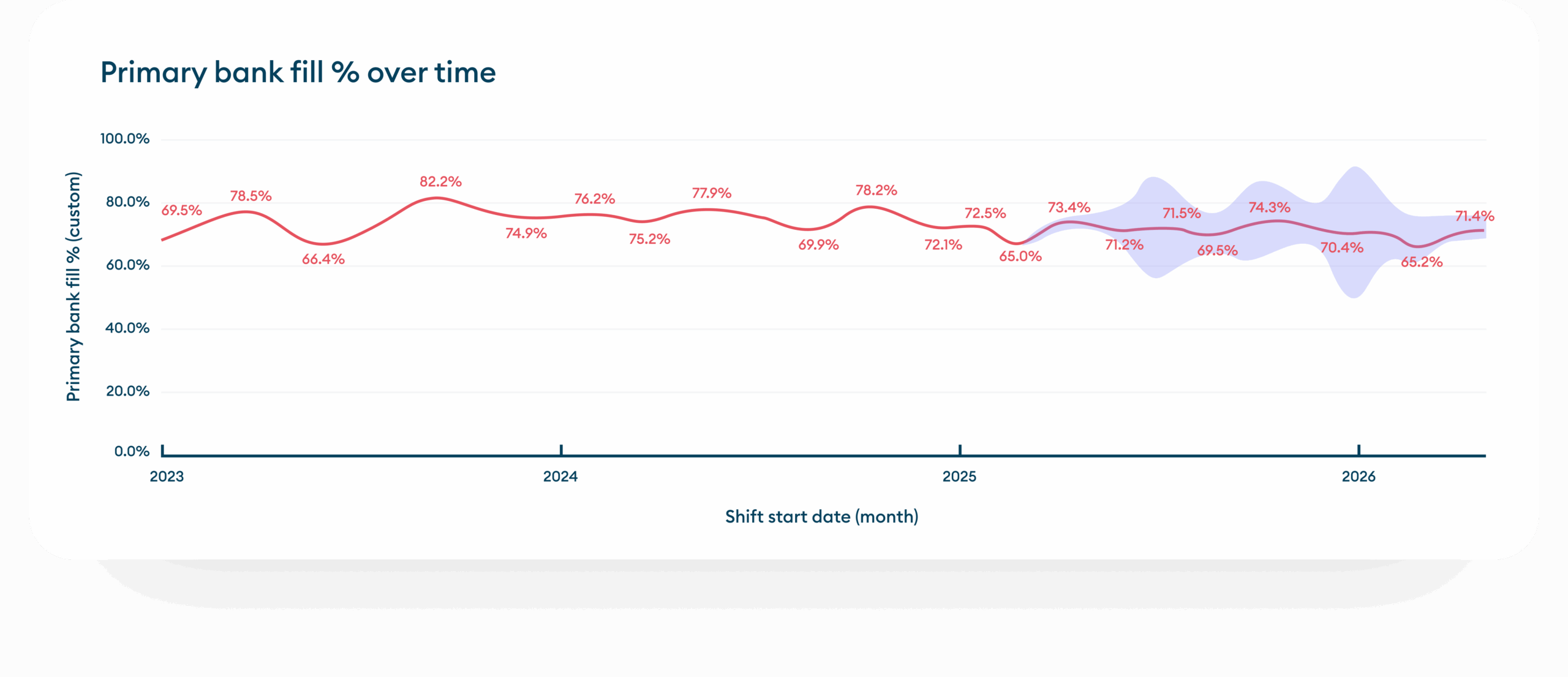Reducing agency spend: In response to the Secretary of State for Health

The recent joint letter from the Secretary of State for Health and Social Care and the Chief Executive of NHS England set a clear and ambitious direction. The NHS have been asked to reduce agency spend by 30% in the next financial year.
This is a significant objective. For workforce leaders already navigating complex pressures, it may feel like a steep hill to climb. But with the right tools, infrastructure and insights, meaningful progress is not only possible but achievable.
At Patchwork Health, we’ve been working with NHS organisations across the country to make this shift a reality. In this short piece, we unpack what the latest guidance means for those on the ground and show how technology can help organisations move forward with confidence.
Turning policy into practice
The letter urges every NHS organisation to play its part in delivering better value for money and reducing unnecessary spend. Agency margins are described as, in most cases, avoidable costs that could be redirected into patient care.
This isn’t just a budgeting challenge. It’s a system-wide objective to deliver flexible work more effectively. It means empowering clinicians to choose bank over agency as their preferred route of flexible work and ensuring the right internal processes and systems are in place to support that choice.
Building a better bank experience
One of the clearest messages from the letter is that staff banks should be the first port of call for temporary staffing. To make this work, the bank experience has to be easy, transparent and rewarding.
Patchwork Bank is designed to do exactly that. Clinicians can browse, book and manage shifts in real time. Notifications, digital timesheets and simplified workflows help reduce friction. We have also recently improved our onboarding flow, making it far easier for organisations’ temporary staffing teams to view and assess applicants to the bank. Booking shifts and getting paid on time is paramount, and when clinicians feel supported, your bank becomes stronger and a far more reliable resource.
Making smarter use of your data
The letter also calls on trusts to review and manage their bank pay rates carefully. Organisations are expected to evaluate their rates against the local market and ensure they are not exceeding the average agency equivalent.

Patchwork’s rate comparison dashboard gives you the visibility to do this with confidence. You can compare real-time rate data across your region, and understand where your spend sits in relation to anonymised data sets. For organisations, it is about maintaining financial grip and control while remaining competitive enough to attract staff to their bank.
Supporting you to plan ahead
With increased government intervention and closer attention paid to spend, it will be more important than ever to demonstrate clear progress and have robust plans in place. That includes tracking where reliance on agency persists, understanding why, and having the tools to make more effective use of internal and collaborative staff banks.
Patchwork’s reporting suite offers full visibility of temporary staffing activites. You can monitor trends, flag risks, such as, oversight across last minute vacancies and the risk of unfilled shifts that could end up going to agency. For many of our NHS partners, these insights are already helping to shape strategy and reduce agency demand through informed decision-making. 
We also support trusts with worker onboarding, communication tools and features to help surface bank options before agency routes are considered. It’s a system designed to put your internal workforce first.
You’re not starting from scratch
This is a complex challenge, but it’s one we’ve seen many organisations overcome. Whether you are just starting to reduce agency usage or looking to reach the next stage of your temporary staffing strategy, Patchwork is here to support workforce transformation.
By working in partnership with NHS teams, we’ve supported tangible savings, increased bank fill rates and helped ensure that flexibility doesn’t come at the expense of sustainability.